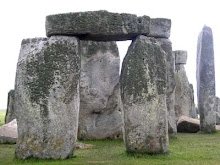We might have an idea that it doesn’t buy as much as it used to; but I doubt if we ever really consider if it really reflects the required standards – and I can cheerfully state that we probably have absolutely no idea of what those standards are anyway and don’t care.
And yet, the importance of those standards is such that the credibility of our currency depends on the trust that they have been met.
So important is this that the oldest established English judicial procedure is still in effect today. In fact we should see the 728th sitting of the Jury in the Trial of the Pyx taking place at the Goldsmith’s Hall on the second Tuesday of this month.
In simple terms our coinage is being put on trial. The trial of the Pyx checks to see whether or not the coins produced by the Royal Mint are within the statutory limits for metal size.
The trial was first held in 1282, and while there was some testing of the purity of coins in early Saxon time, it was in Henry II reign that the formal trial as we now know it first began.
 To begin with the trials were held in Westminster Hall, and later in the Exchequer. And interestingly enough there is also a Chapel of the Pyx in Westminster Abbey where the boxes containing the coinage to be tested were held; it is these boxes that are known as the Pyx.
To begin with the trials were held in Westminster Hall, and later in the Exchequer. And interestingly enough there is also a Chapel of the Pyx in Westminster Abbey where the boxes containing the coinage to be tested were held; it is these boxes that are known as the Pyx. However in 1870 the Goldsmith’s Hall was laid down as the location of the Trial of the coins; which made perfect sense. The Assay Office, which provides the marks synonymous with quality, is right next door and it is the Assay Office that actually conducts the testing.
The Royal Mint itself – once known as the Mint of the Kingdom of England and now located in Wales under the title of Royal Mint of the United Kingdom - is actually a Government owned business. It is the Mint’s responsibility to ‘mint’ or produce the coins of the United Kingdom; and the Master of the Mint is required put aside a number of coins minted over the last year, and it is these that are brought to trial in February of each year.
The jury is made up of members of the Goldsmith’s Company, who are summoned to the hall by the Queen’s Remembrancer, a senior judge in the Courts of Justice. Strangely this is a formal court of law and during its sitting the coins are counted and weighed and put aside for testing by the Assay Office.
While modern methods do not leave much leeway for wilful theft, this was not always the case. Coins could be minted with less than the required amount of metal and the wily Master of the Mint could squirrel away the surplus! Even with the annual Trial of the Pyx there have been some early Masters of the Mint who have made their fortunes one way or another!!
But gradually the trial did bring consistency in the coinage and is still used throughout many of the commonwealth countries to test the standards of their currency. So there is another footprint of the English still seen throughout the world.
But, even with the modern methods, mistakes of dreadful proportions can be made.
There is a very entertaining and informative account of a personal visit to the Trial of the Pyx in February 2009 on ‘IanVisits Blog’ – we can read the verdict (which is usually issued two months later) of that trial as well.
So while we can be certain that the value of our coins do meet the required standards, check out some of those coins in your pockets, purses or behind the sofa cushions; and have a really good look at them. You never know … you just might find a fortune… thanks to the Master of the Mint!!



No comments:
Post a Comment